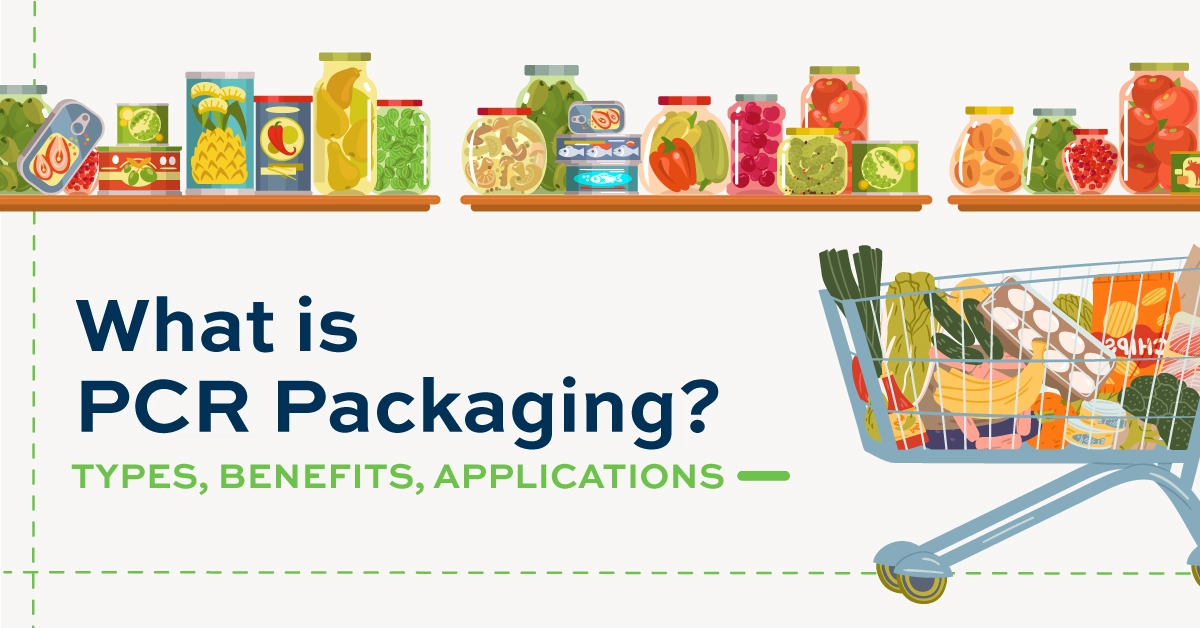What is PCR Packaging? Types, Benefits, Applications
PCR, or Post-Consumer Recycled packaging, involves converting used materials into new packaging, offering a substantial reduction in carbon emissions and waste generation.
Why is PCR packaging so critical today? Because the world is facing the overwhelming challenge of ensuring the stability of our environment, and businesses worldwide are now being implored to uphold sustainable practices and reduce their environmental impact.
Statistics reveal a pressing need for eco-conscious solutions. As of 2023, the global average consumption of plastic per person is 20.9 kg, and a worldwide total consumption of 158,943,925 tons per year. Enter PCR packaging: a promising avenue in the quest for sustainability.
Businesses and consumers alike stand to benefit significantly from PCR packaging. For companies, it presents an opportunity to align with eco-friendly initiatives, enhance brand reputation, and meet consumer demand for sustainable products. Consumers, on the other hand, gain access to custom packaging solutions in materials that minimize environmental harm and contribute to a circular economy.
Sections In this Page:
- What is PCR Packaging?
- How PCR Packaging Works
- Benefits of PCR Packaging
- Types and Applications of PCR Packaging
- PCR Packaging Practices and Trends Today
What is PCR Packaging?
PCR packaging is made from post-consumer recycled materials, typically PCR plastics, such as polyethylene terephthalate (PET) and high-density polyethylene (HDPE). These are sourced from post-consumer waste, which undergoes a recycling process to create new packaging products.
What good is it that businesses start implementing this sustainable process?
PCR decreases plastic waste in landfills because of how much plastic it recycles. Because of recycling, it conserves natural resources and lowers carbon emissions associated with manufacturing virgin plastics. Lastly, the backbone of a self-sustaining industry is its ability to promote a circular economy.
How PCR Packaging Works: Recycling and Manufacturing Process
Discover the intricate process behind PCR packaging, from post-consumer materials to eco-friendly packaging solutions. This process offers insight into how plastics, such as bottles, jars, and containers, are transformed into new packaging products.
Collection of post-consumer materials
PCR packaging’s journey starts with the meticulous collection of post-consumer materials, primarily focusing on HDPE and PCR plastic bottles. Some of these materials include, but are not limited to, the following:
- Soft drink and water bottles
- Juice and liquor bottles
- Cooking oil containers
- Food jars
- Pastry jars
- Frozen food or other trays
- Clamshell packaging
- Aspirin bottles
- Milk jugs
- Plastic bottles
- Shampoo bottles
- Bleach bottles
- Cutting boards
- Piping
These materials are sourced from diverse locations such as recycling bins, waste sorting facilities, and dedicated recycling centers. Since companies divert the delivery of these plastics from landfills to their factories, the collection process serves as a crucial step toward sustainable waste management practices.
Sorting and cleaning processes
Following collection, the post-consumer plastics undergo rigorous sorting and cleaning procedures. They’re sorted based on their type, color, and quality to ensure consistency in the recycling process.
Companies implement thorough cleaning methods to remove contaminants, such as labels, adhesives, and residues. The meticulous sorting and cleaning process is essential, guaranteeing the quality and purity of the recycled materials.
Recycling technologies
Once sorted and cleaned, the plastics enter various recycling technologies. These technologies mean both mechanical and chemical recycling methods.
Mechanical recycling involves shredding the plastics into smaller pieces or pellets, which are then melted and extruded to form new packaging products.
Chemical recycling breaks down plastics into their constituent polymers by exposing them to different chemical agents to separate each layer of the plastic, allowing it to transform complex plastics into high-quality recycled materials suitable for PCR packaging applications.
Manufacturing of PCR plastic packaging products
The final stage of the PCR plastic’s journey involves the manufacturing of packaging products using recycled materials. The recycled polymer pellets obtained are then melted and molded into various packaging items such as bottles, containers, and packaging films.
Strict quality control measures are implemented throughout the manufacturing process to ensure that the PCR packaging products meet industry standards for strength, durability, and safety.
These packaging solutions contribute significantly to company sustainability efforts—reducing environmental impact and fostering a more eco-conscious approach across industries.
6 Benefits of PCR Packaging
Explore the diverse advantages that PCR packaging offers, from reducing carbon footprints and conserving resources to fostering corporate social responsibility and gaining a competitive edge in the market.
1. Cost savings
Precisely because of the decrease in energy consumption during production, you can expect a reduction in cost. You can also expect to see savings on various aspects of production, from raw material purchases to fuel consumption—contributing to overall profitability.
2. Competitive advantage
Adopting this packaging appeals to eco-conscious consumers, enhancing a brand’s market position and reputation. In the last five years, there has been a 71% increase in online searches for eco-friendly and sustainable businesses. By showcasing a commitment to sustainability, you attract customers who prioritize eco-friendly products, leading to increased sales and loyalty.
Moreover, promoting PCR in marketing campaigns strengthens your image as a sustainability leader, distinguishing it from competitors and capitalizing on the growing demand for environmentally responsible options.
3. Corporate Social Responsibility (CSR)
PCR contributes to CSR by demonstrating a commitment to environmental sustainability. Companies that use this packaging showcase their dedication to reducing plastic waste and promoting eco-friendly practices.
Fortunately, even bigger companies are making an effort to keep their end of the bargain and show transparency. Research shows that around 80% of all Fortune 500 and S&P 500 companies now issue a CSR report. Adopting PCR packaging in your business can improve your CSR profiles, enhance public perception, and contribute positively to the environment and society.
4. Reduced carbon footprint
Product Carbon Footprint (PCF) is pivotal in environmental sustainability as it measures a product’s greenhouse gas emissions. By knowing how much harmful gas they produce, companies can find ways to reduce their environmental impact. For example, a clothing brand can use PCF data to optimize transportation methods, such as switching to electric vehicles and lowering emissions and costs.
5. Resource conservation
PCR packaging decreases the demand for petroleum-derived raw materials used in the production of virgin plastic. This conservation effort includes lessening energy consumption required for extraction, refining, and production processes involved in creating virgin plastics, appealing to eco-conscious consumers, and supporting environmentally friendly practices.
6. Promotes circular economy
Overall, using recycled materials from post-consumer waste streams decreases the demand for virgin plastics derived from fossil fuels, thus lowering greenhouse gas emissions and conserving valuable natural resources. This sustainable approach encourages the reuse and recycling of materials, contributing to a circular economy where resources are kept in use for as long as possible—closing the loop on material usage.
As businesses increasingly prioritize sustainability, understanding the benefits and strategies of PCR packaging is crucial. Delve into sustainable packaging practices and regulatory trends worldwide, explore these informative resources: The Switch to Sustainable Packaging: A Guide for Your Business, Packaging Sustainability: Regulatory Trends Across the World
6 Types of PCR Packaging
From cardboard boxes to PET bottles, discover how PCR materials are reshaping the packaging landscape for a greener future. Explore the different PCR packaging with these six versatile and sustainable solutions.

1. PET Bottles
PET bottles are widely used for packaging beverages and other products due to their durability, cost-effectiveness, and recyclability. They are transparent, lightweight, and flexible, maintaining the quality and taste of the contents. Recycled PET bottles may have a slight difference in transparency compared to virgin PET but remain suitable for recycling.
2. Cardboard Boxes
Crafted from thick paper stock or heavy paper pulp, cardboard cartons are widely used for shipping and packaging products sold online or in retail stores. These industries heavily rely on cardboard cartons due to their durability, versatility, and cost-effectiveness in packaging and shipping a wide range of products.
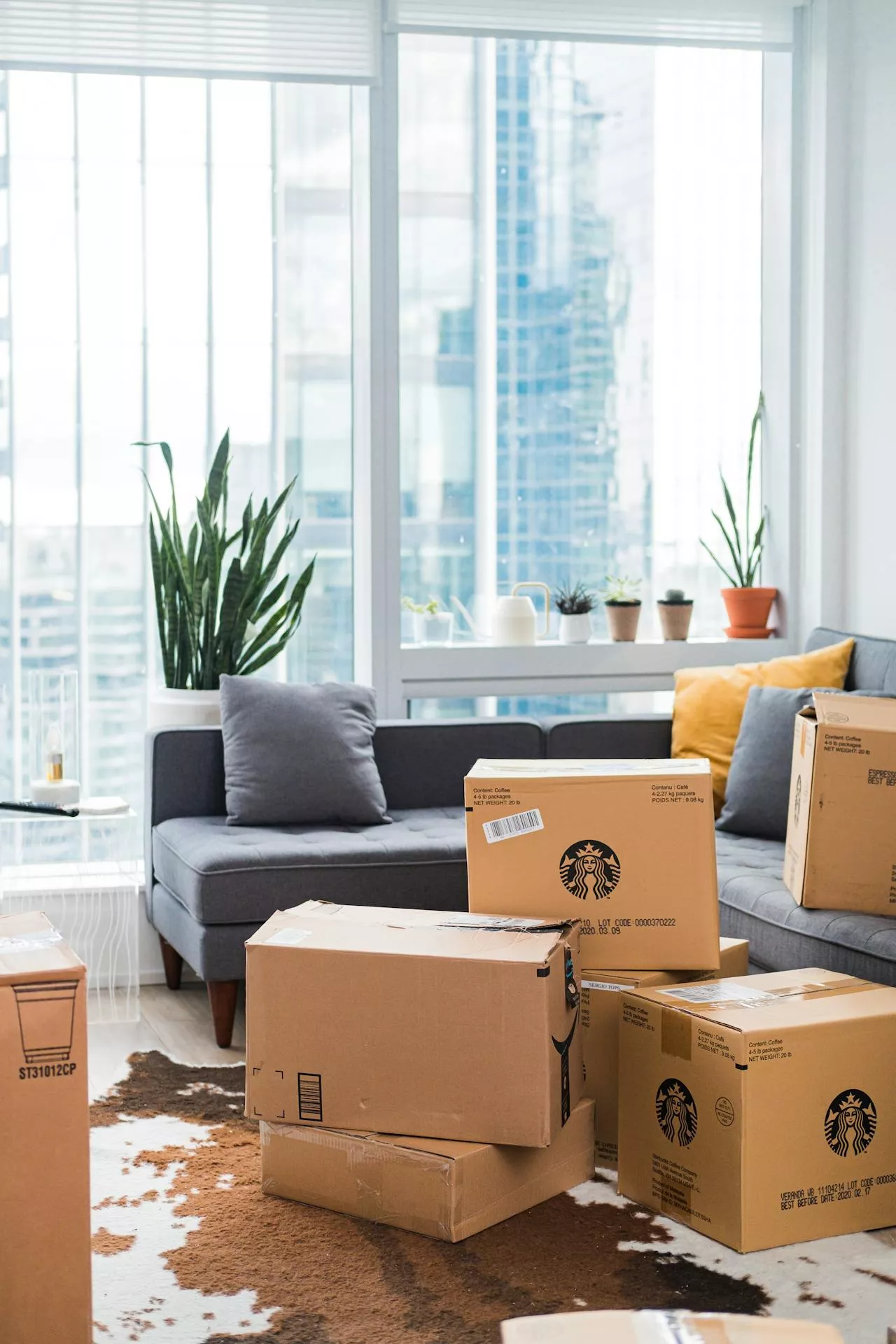
3. HDPE Containers
HDPE packaging is a translucent, matte-finished plastic ideal for food and beverage containers, such as milk jugs and juice bottles, due to its lightweight, durable nature. HDPE’s chemical resistance, UV protection, and ability to maintain vibrant colors make it a versatile choice across industries.
This packaging is also used for personal care products, household cleaning items, toy manufacturing, and outdoor applications, such as recycling bins and pipes.
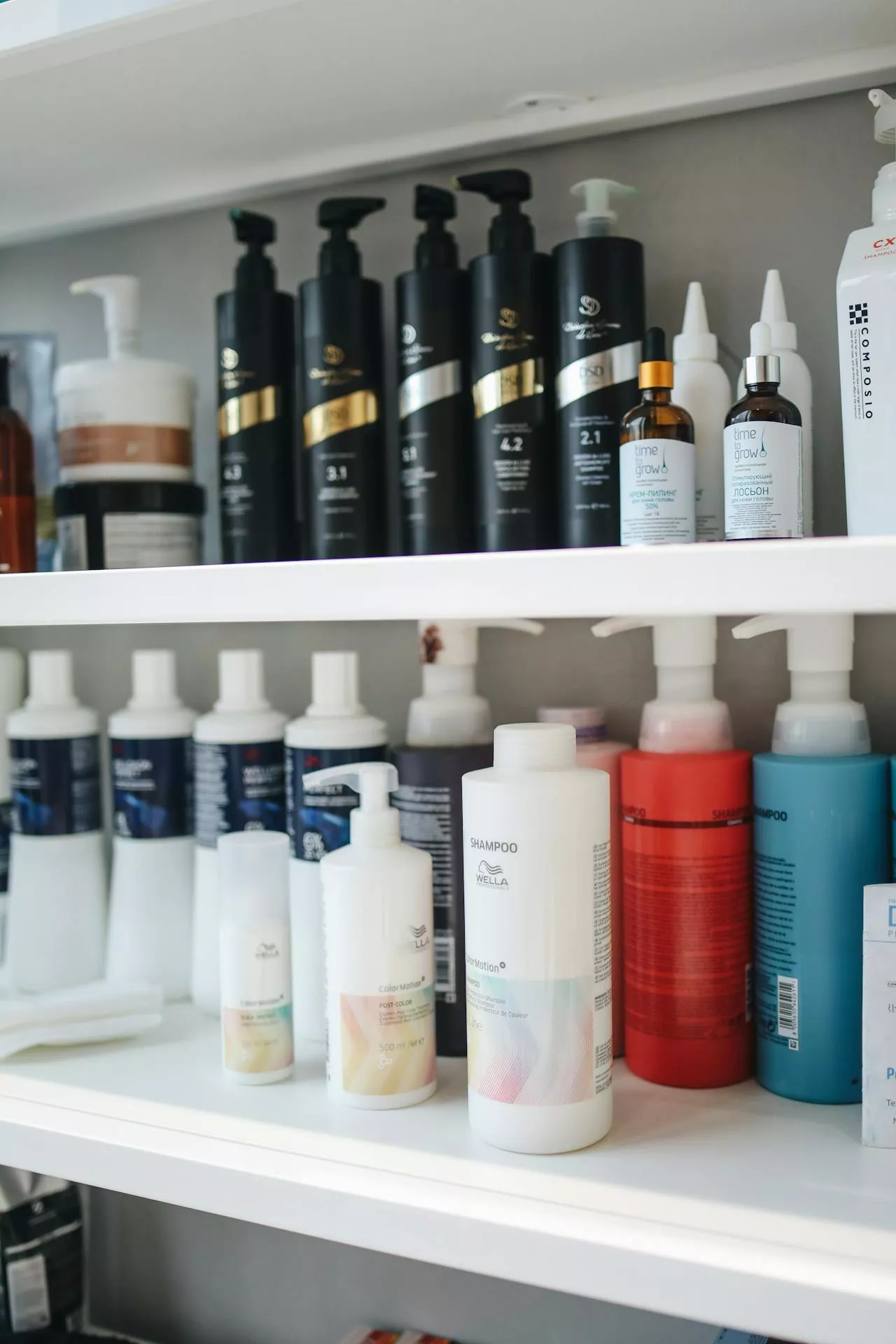
4. Glass Packaging
Glass packaging, composed of sand, soda ash, limestone, and recycled glass cullet, is a sustainable material that is endlessly reusable and recyclable. It is inert, ensuring food safety and health even after multiple recycling cycles.
Glass is advantageous as it’s tailored to the product type. For instance, PCR cosmetics packaging, along with food and beverages, pharmaceuticals, and perfumery, heavily relies on glass packaging for protection, transportation, branding, and waste prevention.
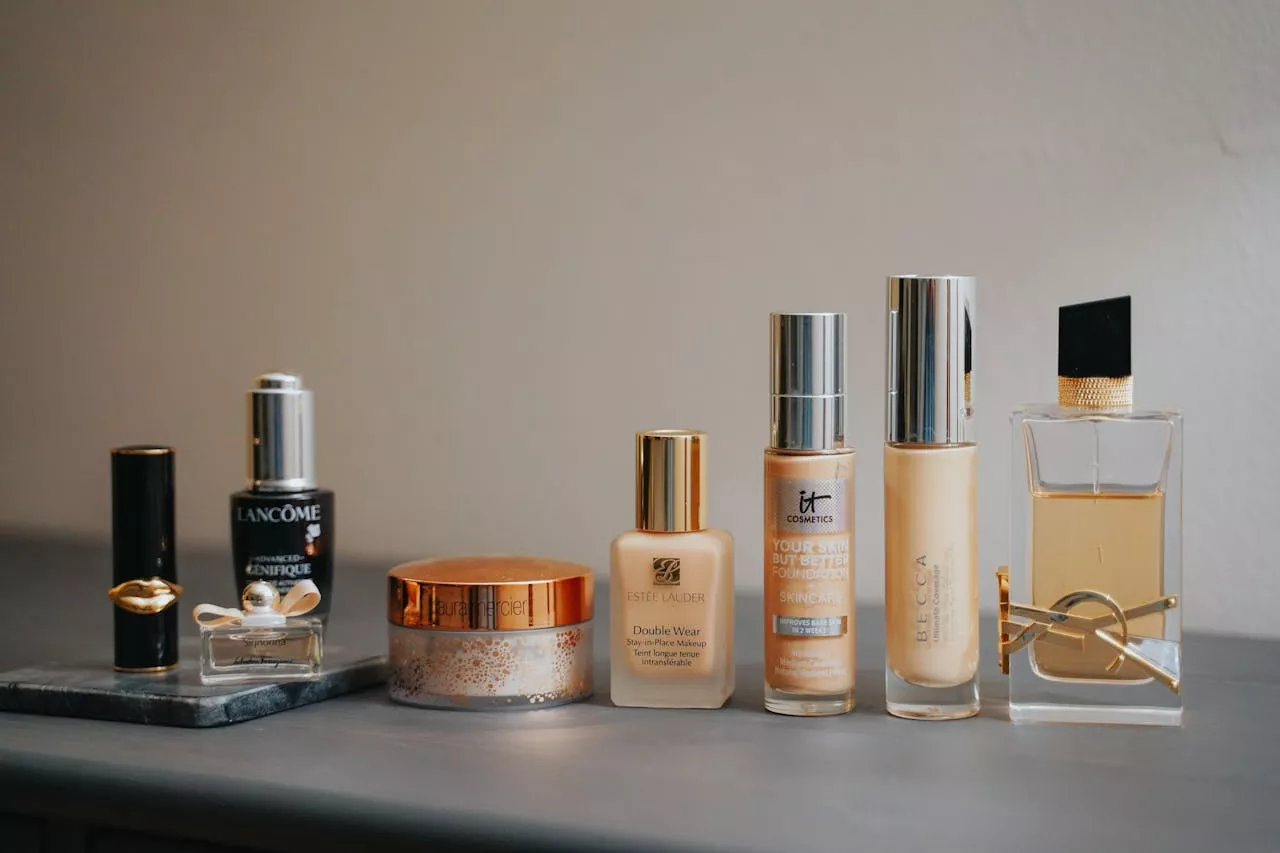
5. Aluminum Cans
Aluminum, abundant in the earth’s crust, is extracted and used for its lightweight yet sturdy properties. Industries such as food, beverages, oil, chemicals, and other liquids utilize aluminum cans due to their freshness preservation, quick chilling ability, durability, recyclability, and efficient transportation advantages. They have one of the highest recycling rates and are favored for their convenience and environmental benefits.
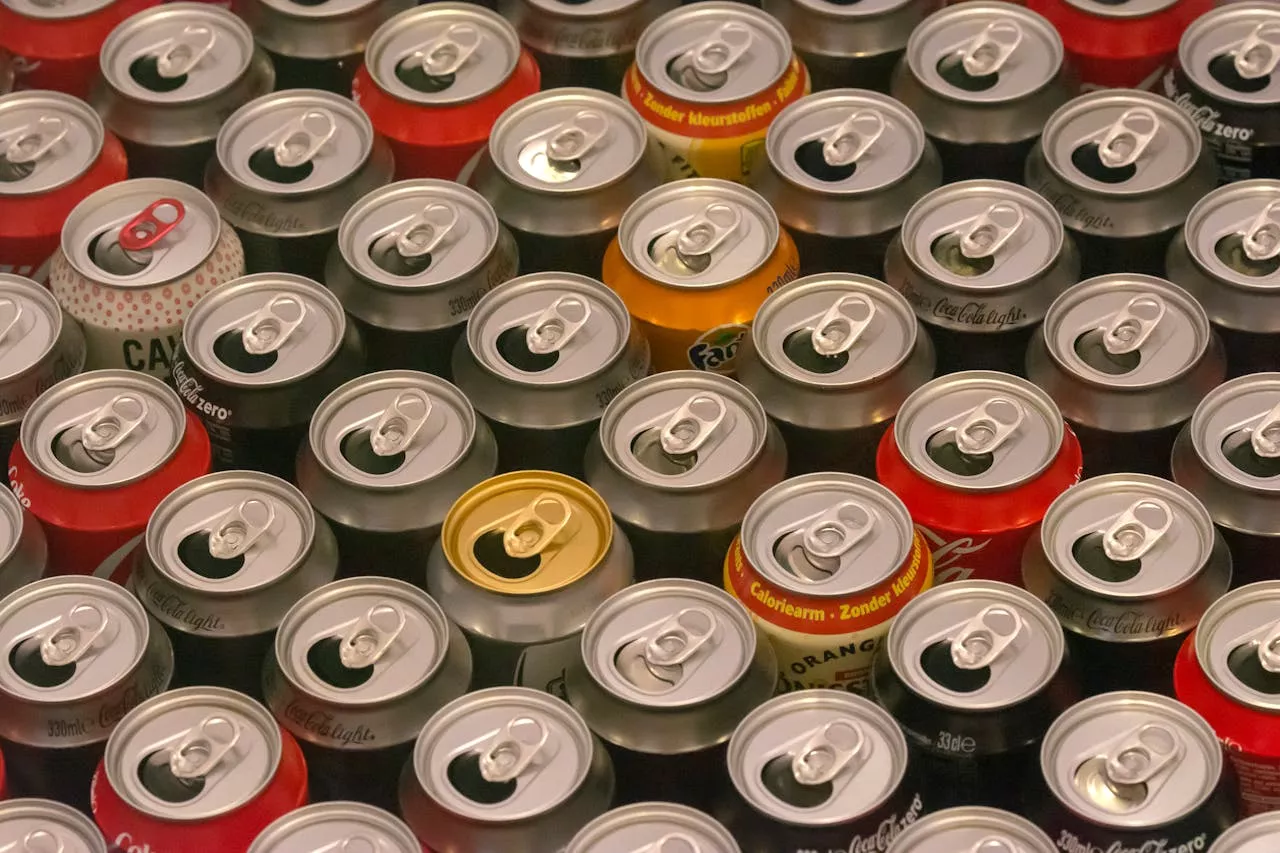
6. Paperboard Boxes
Paperboard boxes are thick paper packaging materials commonly made from layers of compressed paper fibers. They offer endless possibilities for unique designs, including scoring, folding, embossing, hot foil stamping, UV coatings, and windowing. Food, beverage, cosmetics, pharmaceutical, and consumer goods industries often utilize paperboard packaging such as folding cartons for various packaging needs.
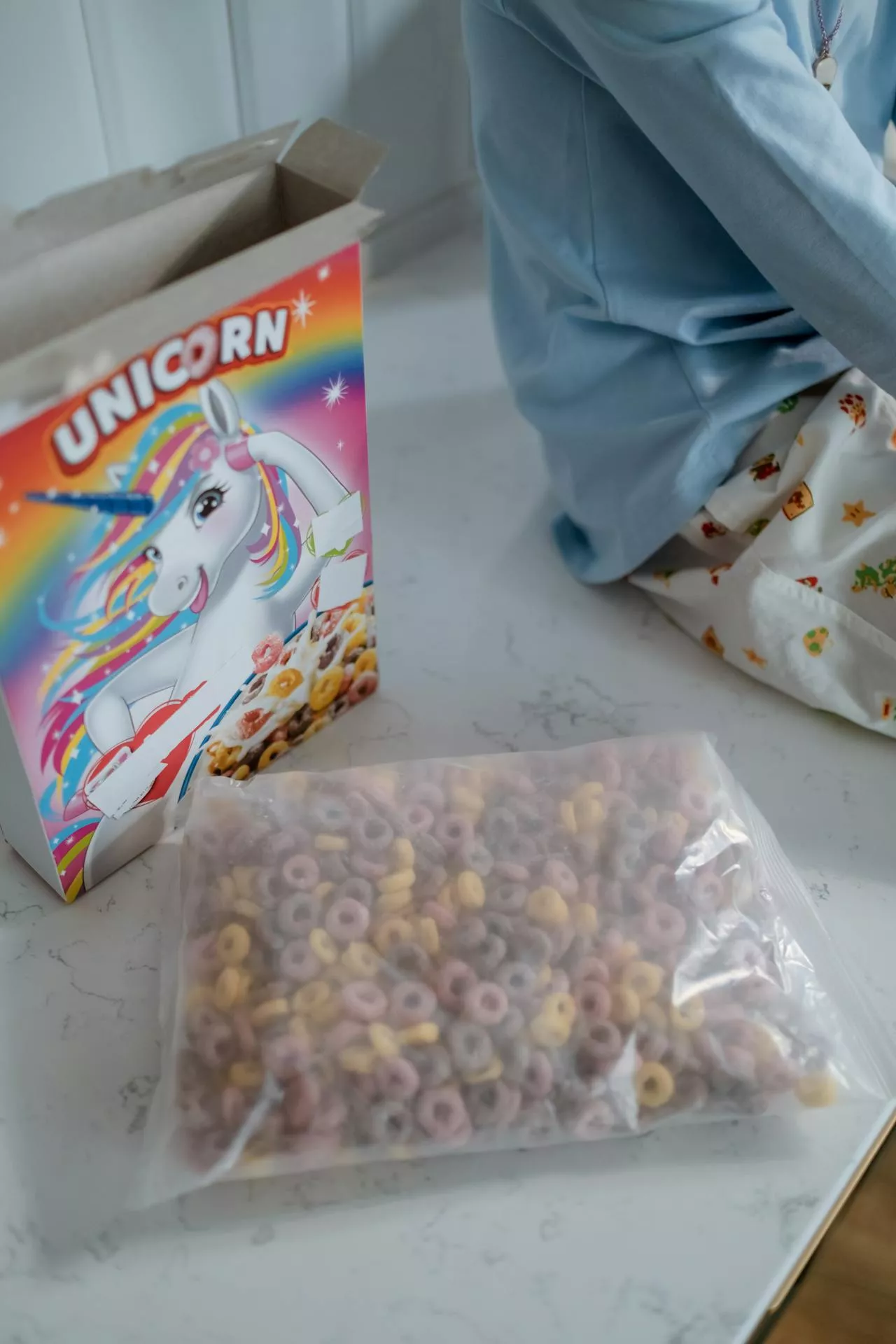
Want to elevate your packaging with cutting-edge printing techniques? Explore the in-depth guide comparing them: 5 Types of Packaging Printing Techniques: A Comparative Guide
PCR Packaging Practices and Trends Today
The world is constantly changing, and more brands are starting to adapt to improve their processes. Explore the latest innovations and sustainable strategies shaping the packaging industry today.
1. Circular economy approach
The current trend of adopting a circular economy approach in packaging is driven by the need to minimize waste and maximize resource efficiency. Rightfully so, as research indicates, 2023 witnessed a total of 158,943,925 tonnes of plastic waste, and 43% of this global plastic waste was projected to be mismanaged at the end of its lifecycle.
Companies must carefully monitor PCR sustainable packaging lifecycles to minimize environmental harm, including pollution, resource depletion, and ecosystem degradation. Companies can start redesigning their packaging to be easily recyclable and reusable, thus closing the loop on material usage and reducing environmental impact.
2. Design for recycling
Businesses are increasingly focusing on designing packaging that is easy to recycle. Regulatory requirements and consumer demand for sustainable practices drive this trend. For instance, using mono-material packaging or eliminating complex material combinations makes recycling more efficient and cost-effective.
For example, Coca-Cola is rigorously pursuing the use of recycled materials in their packaging. Their goal is to make 100% of their packaging recyclable globally by 2025 and to use at least 50% recycled material in their packaging by 2030.
3. Innovation in material recycling
The trend of innovating in material recycling involves developing new technologies and processes to recycle packaging materials effectively. For example, advancements in sorting technologies and chemical recycling methods are enabling the recycling of challenging materials, such as multi-layer plastics, contributing to a more circular economy.
4. Biodegradable and compostable alternatives
Based on recent market research, the global Biodegradable Packaging Market is forecasted to grow at a CAGR of 6.2% from 2023 to 2032, with a projected market size of USD 96.5 Billion in 2022 reaching USD 135.3 Billion by 2032.
Concerns about plastic pollution and waste management are driving the shift towards biodegradable and compostable product packaging alternatives. Businesses are exploring options, such as bioplastics and compostable packaging materials, to offer environmentally friendly choices to consumers and meet sustainability goals.
5. Transparency and consumer education
There is a growing trend towards transparency in packaging, with businesses providing clear information about the recyclability and environmental impact of their products. A significant majority of consumers (80%) expressed greater trust in companies that offer transparent data supporting their sustainability initiatives, while 25% actively monitor government sustainability regulations to gauge their impact on preferred brands and products.
Consumer education initiatives, such as labeling schemes and sustainability certifications, help raise awareness and empower consumers to make eco-conscious purchasing decisions.
Take the next step towards sustainable packaging solutions. Learn more through this guide: Product Packaging for a Circular Economy: Everything You Need to Know
Embrace Sustainability for a Greener Future
Employing sustainable packaging practices has revealed the immense potential of PCR packaging in reducing environmental impact across industries. From reducing carbon footprints to promoting circular economy practices, PCR packaging stands as a beacon of eco-conscious innovation that embraces a more holistic approach in the manufacturing industry.
As your business navigates these packaging strategies, consider consulting with a reliable sustainable packaging manufacturer and discover how to boost your eco-friendly initiatives. Contact the Meyers experts and start a greener future for your brand.

